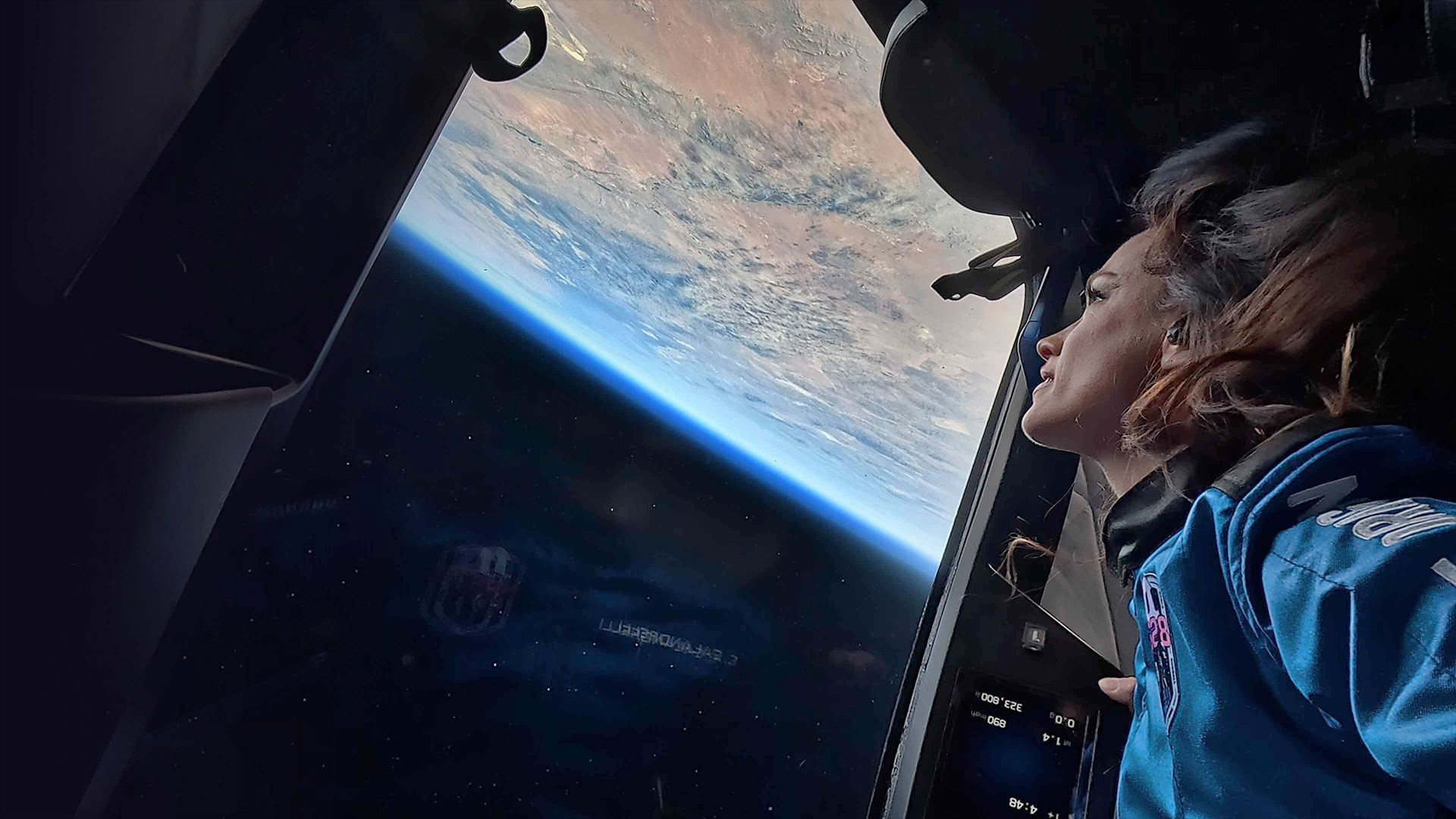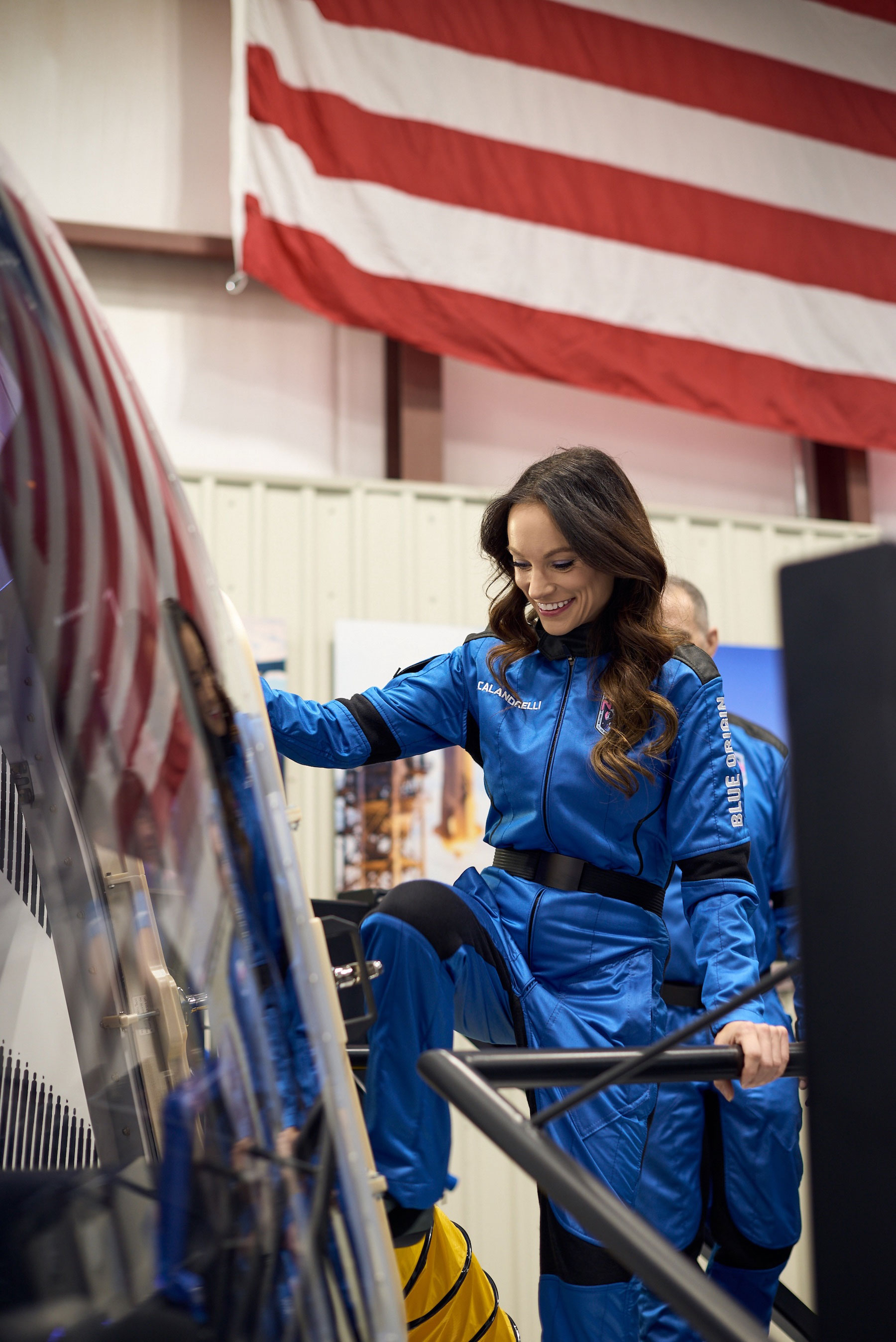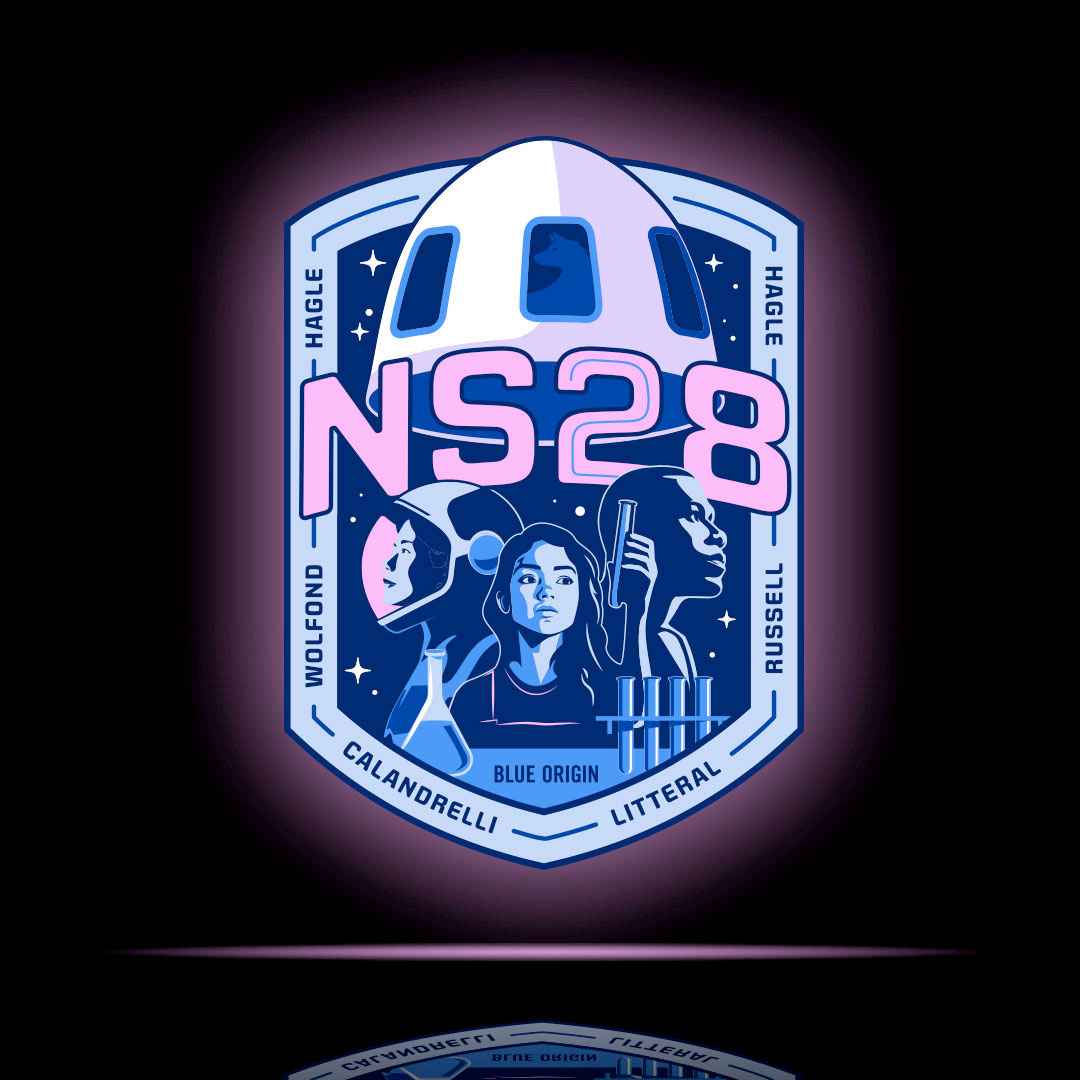Blue Origin crew, including history's 100th woman to fly to space, lands safely (video)
The NS-28 crew also included a married couple on their second Blue Origin flight, a passenger sponsored by Whatnot, a former game warden and the CEO of a Canadian investment firm.

"The Space Gal" is now the 100th woman to fly to space.
Emily Calandrelli, who adopted her online persona long before she booked a trip with Blue Origin, lifted off on Friday (Nov. 22) as one of the six passengers aboard the company's New Shepard rocket. The 10-minute suborbital flight — of which about four minutes were spent in space — launched and landed at Blue Origin's West Texas site.
"This is my dream," wrote Calandrelli on social media when it was announced she was going to be on Blue Origin's NS-28 crew. "I studied aerospace engineering for nearly a decade, then became the first woman in the U.S. with a national science [TV] show. It became my mission to bring representation to girls in STEM [science, technology, engineering and mathematics]."
"Now, I'll become one the first 100 women in space, showing girls everywhere that they too can reach the stars," she said.
The ninth human spaceflight in Blue Origin's history, NS-28's crew also included Marc and Sharon Hagle, a married couple on their second Blue Origin launch after flying on the NS-20 mission in 2022; Austin Litteral, whose seat was sponsored by the livestream shopping platform Whatnot; J.D. Russell, an entrepreneur and former federal marine, fish and wildlife game warden; and Hank Wolfond, the CEO of a Canadian investment firm and a private pilot.
Related: 'The Space Gal' Emily Calandrelli opens up about her Blue Origin flight (interview)
The six civilian astronauts rode aboard the "RSS First Step," Blue Origin's first of two human-rated New Shepard spacecraft. Lifting off at 10:30 a.m. EST (1530 GMT or 9:30 a.m. local Texas time), the capsule reached an apogee of 347,661 feet (65.8 miles or 106 kilometers), flying 3 miles (4.8 km) above the Kármán line that serves as the internationally accepted border between Earth's atmosphere and outer space.
"We got to weightlessness, I immediately turned upside down and looked at the planet and then there was so much blackness. There was so much space," said Calandrelli soon after the flight. "I didn't expect to see so much space, and I kept saying 'That's our planet! That's our planet!' It was the same feeling I got when my kids were born, and I was like, 'That's my baby! That's my baby!' I had that same feeling where I'm seeing it for the first time, and it was beautiful."
The gumdrop-shaped spacecraft then descended under parachutes to a "soft" landing, while the New Shepard propulsion module (or booster) that lofted the crew to altitude made an engine-assisted vertical touchdown.
Calandrelli is the 10th woman to fly on a suborbital spaceflight above the Kármán line. She is the 21st woman to reach space on a suborbital trajectory, including the astronauts who soared higher than the U.S.-recognized altitude of 50 miles (80 km) on Virgin Galactic's SpaceShipTwo rocket plane.
Overall, Calandrelli is now among the 94 men and women who have seen Earth from above 50 miles high but who did not enter orbit. Including all of the people (men and women) who have flown into space on orbital or suborbital launches, she is the 714th space traveler (as tallied by the Association of Space Explorers).

A native of West Virginia, Calandrelli is the first woman and third person to represent her home state in space (after NASA astronauts Jon McBride and Drew Morgan).
Get the Space.com Newsletter
Breaking space news, the latest updates on rocket launches, skywatching events and more!
"I can't believe that [a] girl from Morgantown, West Virginia, gets to represent the 100th woman in history to fly to space." wrote Calandrelli.
Although the price of her seat remains undisclosed, Calandrelli did say that she paid "just as much as the others" on New Shepard through the support of "20 to 30 organizations, brands and people." In return, she offered to do sponsored posts on her online channels and deliver speeches.

The first woman to fly into space (and first woman to enter orbit) was Soviet-era cosmonaut Valentina Tereshkova, who launched in 1963. NASA astronaut Karen Nyberg became the 50th woman to leave Earth's atmosphere in 2008.
The first woman to launch on a suborbital flight was Beth Moses, Virgin Galactic's chief astronaut instructor, whose first of six SpaceShipTwo missions (to date) was in 2019. The first woman to fly on New Shepard was Wally Funk, an aviator and member of the so-called "Mercury 13," who underwent the same medical tests as NASA's first astronauts in the early 1960s.
Among the personal items that Calandrelli took with her to space was a montage showing photos of the 99 women who flew before her.
"I wanted to honor how they paved the way for women like me and how they've made it possible for the next generation of girls who want to reach for the stars to actually grab a few," she said.
This article was updated on Nov. 22 to include Emily Calandrelli's post-flight comments and a photo of her taken while in space.
Follow collectSPACE.com on Facebook and on X at @collectSPACE. Copyright 2024 collectSPACE.com. All rights reserved.
Join our Space Forums to keep talking space on the latest missions, night sky and more! And if you have a news tip, correction or comment, let us know at: community@space.com.

Robert Pearlman is a space historian, journalist and the founder and editor of collectSPACE.com, a daily news publication and community devoted to space history with a particular focus on how and where space exploration intersects with pop culture. Pearlman is also a contributing writer for Space.com and co-author of "Space Stations: The Art, Science, and Reality of Working in Space” published by Smithsonian Books in 2018.In 2009, he was inducted into the U.S. Space Camp Hall of Fame in Huntsville, Alabama. In 2021, he was honored by the American Astronautical Society with the Ordway Award for Sustained Excellence in Spaceflight History. In 2023, the National Space Club Florida Committee recognized Pearlman with the Kolcum News and Communications Award for excellence in telling the space story along the Space Coast and throughout the world.










